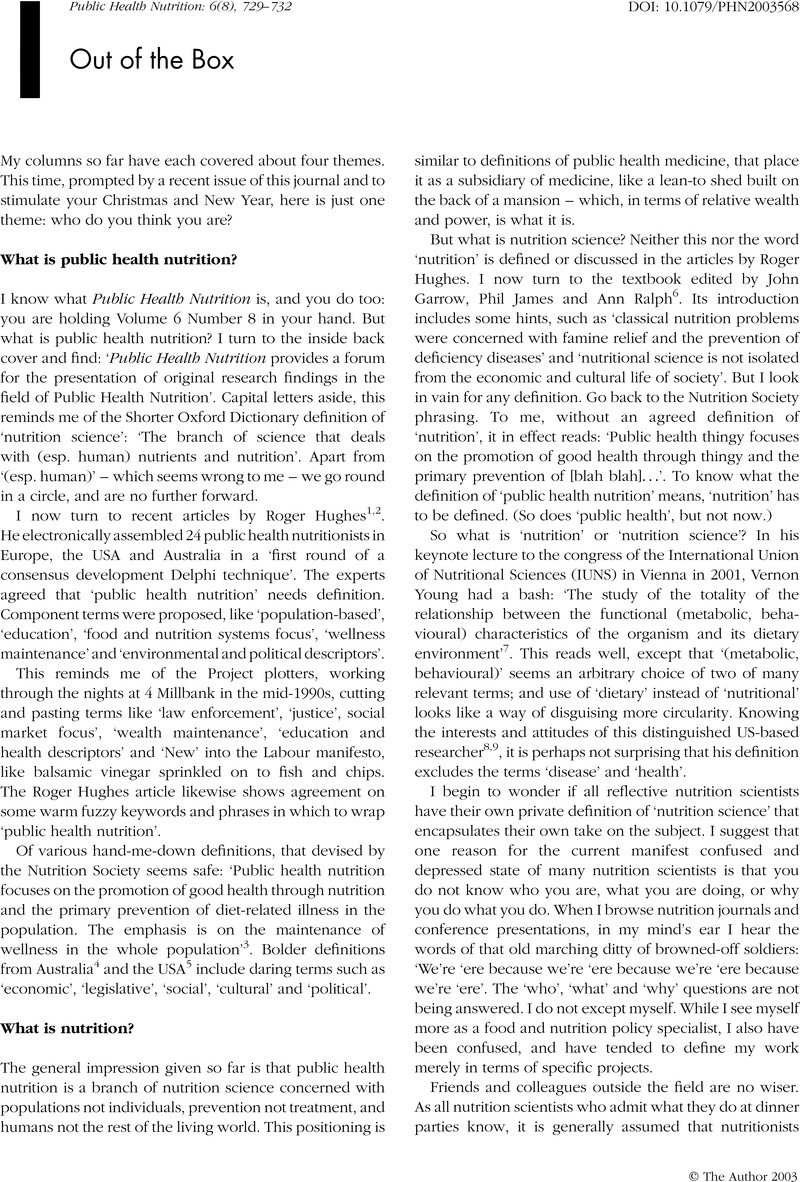Crossref Citations
This article has been cited by the following publications. This list is generated based on data provided by Crossref.
Cannon, Geoffrey
2003.
Out of the Box.
Public Health Nutrition,
Vol. 6,
Issue. 5,
p.
427.
Last updated 2nd August 2024: Online ordering is currently unavailable due to technical issues. As we resolve the issues resulting from this, we are also experiencing some delays to publication. We are working hard to restore services as soon as possible and apologise for the inconvenience. For further updates please visit our website https://www.cambridge.org/news-and-insights/technical-incident

Published online by Cambridge University Press: 02 January 2007
